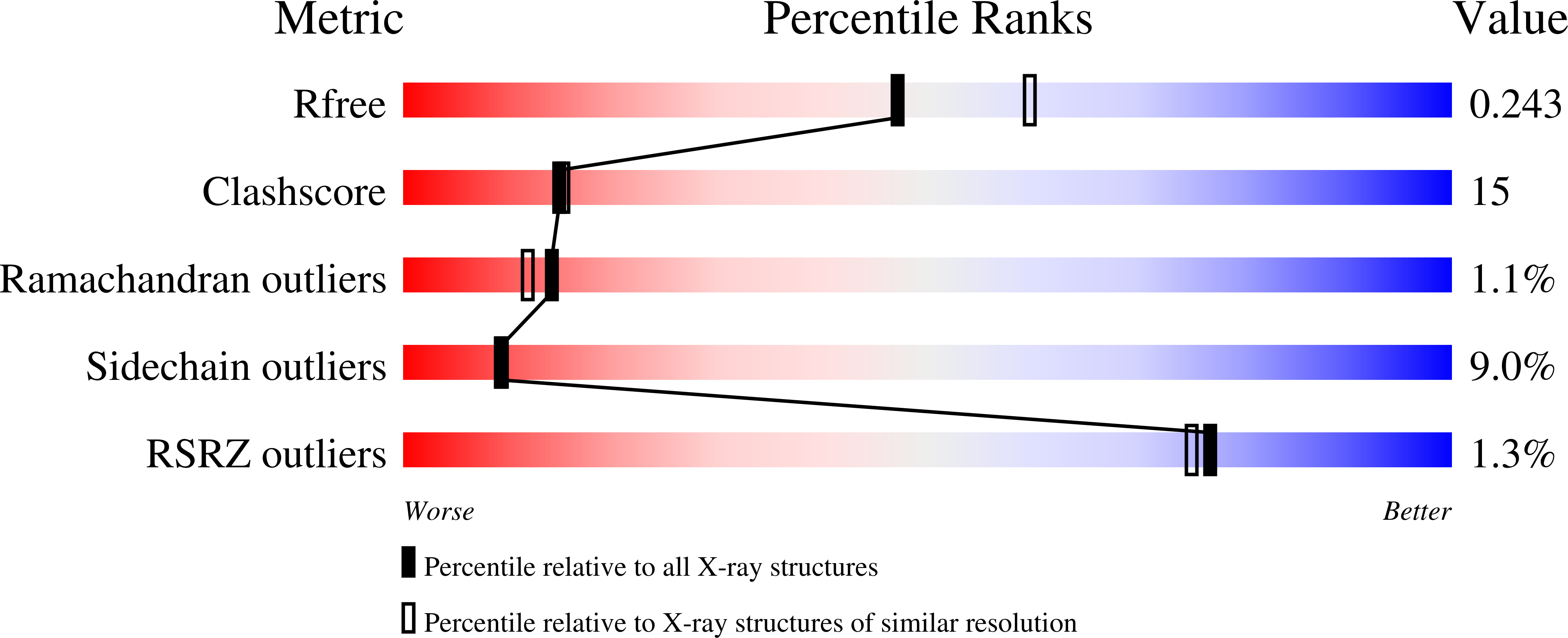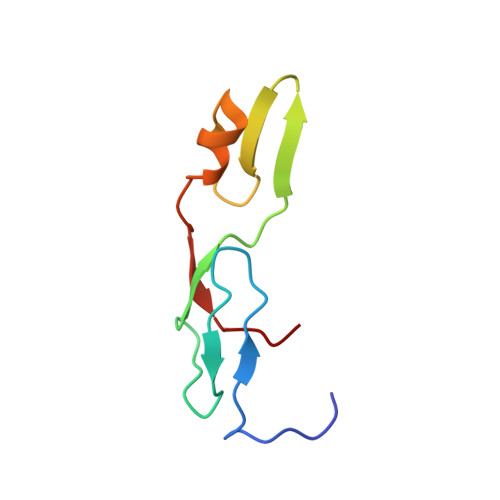Structural Basis for Assembly of Hsp90-Sgt1-Chord Protein Complexes: Implications for Chaperoning of Nlr Innate Immunity Receptors
Zhang, M., Kadota, Y., Prodromou, C., Shirasu, K., Pearl, L.H.(2010) Mol Cell 39: 269
- PubMed: 20670895
- DOI: https://doi.org/10.1016/j.molcel.2010.05.010
- Primary Citation of Related Structures:
2XCM - PubMed Abstract:
Hsp90-mediated function of NLR receptors in plant and animal innate immunity depends on the cochaperone Sgt1 and, at least in plants, on a cysteine- and histidine-rich domains (CHORD)-containing protein Rar1. Functionally, CHORD domains are associated with CS domains, either within the same protein, as in the mammalian melusin and Chp1, or in separate but interacting proteins, as in the plant Rar1 and Sgt1. Both CHORD and CS domains are independently capable of interacting with the molecular chaperone Hsp90 and can coexist in complexes with Hsp90. We have now determined the structure of an Hsp90-CS-CHORD ternary complex, providing a framework for understanding the dynamic nature of Hsp90-Rar1-Sgt1 complexes. Mutational and biochemical analyses define the architecture of the ternary complex that recruits nucleotide-binding leucine-rich repeat receptors (NLRs) by manipulating the structural elements to control the ATPase-dependent conformational cycle of the chaperone.
Organizational Affiliation:
Section of Structural Biology, The Institute of Cancer Research, Chester Beatty Laboratories, 237 Fulham Road, London SW3 6JB, UK.



















